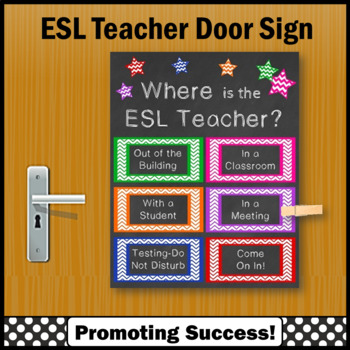As an ESL teacher, you know the power of a well-decorated classroom. Not only do classroom decorations create a vibrant and inviting environment, but they also support language learning and cultural understanding. In this comprehensive guide, we’ll explore various ESL classroom decorations, discuss their benefits, and share personal experiences from my journey as an ESL educator.
Why Classroom Decorations Matter
Decorating your ESL classroom is more than just making it look good. Here are some key reasons why it’s essential:
- Enhance Learning: Decoration can stimulate interest and engagement.
- Cultural Representation: Showcasing diverse cultures fosters inclusion and helps students feel represented.
- Language Acquisition: Visual aids support language learning by providing context to vocabulary.
- Positive Atmosphere: A colorful and well-decorated space can boost students’ morale and encourage participation.
Types of ESL Classroom Decorations

1. Visual Aids
Visual aids are crucial in an ESL classroom. They help students understand new concepts and vocabulary.
Posters
Use posters to illustrate essential vocabulary, grammar rules, or cultural themes. For instance, posters of common phrases or idioms can spark discussions.

Flashcards
Flashcards can be a fun, interactive way to reinforce vocabulary. Create a bulletin board with rotating flashcards showcasing new words.
2. Cultural Displays
Integrate displays that reflect the cultures of your students. This encourages pride in their heritage and curiosity about others.

World Map Wall Art
Using a large wall map can invite students to identify their countries or regions, instigating conversations about their backgrounds.
Celebrating Holidays
Decorate your classroom for different cultural holidays throughout the year. It not only educates students but also helps them feel connected to their traditions.

3. Interactive Boards
Interactive boards promote engagement while learning. Here are a few options:
Word Walls
A word wall populated with new vocabulary words relevant to current lessons can enhance word recognition and usage.

Student Showcase Board
Use a board to display students’ work or projects. This not only celebrates their achievements but also encourages peer learning.
4. Motivational Quotes
Incorporating motivational quotes in the classroom can inspire students. Rotate these on a bulletin board or display them around the room.

Best Practices for Selecting Quotes
- Choose quotes that resonate with students’ experiences.
- Incorporate both English and students’ native languages.
Creative ESL Classroom Decoration Ideas
1. Themed Decoration
Choose a theme that aligns with the unit you are teaching. For example, during a unit on travel, decorate with a travel theme using suitcases, landmarks, and travel posters.
2. DIY Projects
Engage students in creating decorations. This can include:
Craft Projects
Have students design their own flashcards or posters. These personalized items can then be displayed in the classroom.
Collage of Cultures
Encourage students to bring in items or photos from their cultures to create a collaborative collage.
3. Seasonal Decorations
Change decorations seasonally to keep the environment fresh. For example, use fall leaves and pumpkins in November or snowflakes in December.
Pro Tips for ESL Classroom Decorations
1. Use Bright Colors
- Bright colors stimulate creativity and engagement.
- Ensure that colors do not distract from the lesson.
2. Keep It Organized
A cluttered classroom can overwhelm students. Focus on a clean, organized layout that promotes learning.
3. Involve Students in the Process
Involve students in the decoration process to give them ownership of their learning space.
Comparison Table of ESL Classroom Decoration Ideas
| Decoration Type | Benefit | Ease of Implementation | Cost |
|---|---|---|---|
| Posters | Visual learning aid | Easy | Low |
| World Map | Promotes cultural awareness | Moderate | Moderate |
| Interactive Boards | Encourages participation | Moderate | Low |
| Motivational Quotes | Inspires and motivates | Easy | Free |
Pros and Cons of ESL Classroom Decorations
Pros
- Creates a welcoming environment.
- Supports language acquisition.
- Encourages student engagement and participation.
- Fosters cultural appreciation and inclusion.
Cons
- Can be overwhelming if overdone.
- Requires time and effort to maintain.
- Potential distractions if not aligned with learning objectives.
FAQs About ESL Classroom Decorations
What are the best materials for classroom decorations?
Use sturdy materials like poster board, felt, and laminated sheets to ensure durability. Incorporating both tactile and visual elements enhances engagement.
How often should I change the decorations in my ESL classroom?
Change decorations at the start of each new unit or season to keep the environment fresh and relevant to current learning objectives.
Can I involve students in creating classroom decorations?
Absolutely! Involving students in the decoration process promotes teamwork and ownership of their learning space. It also provides a hands-on learning experience.
Are there digital options for ESL classroom decorations?
Yes, consider using digital displays or projectors to showcase slideshows of images, vocabulary, or cultural information instead of traditional decorations.
Final Thoughts
Creating a well-decorated ESL classroom is a rewarding endeavor that greatly enhances the learning experience. By utilizing visual aids, cultural displays, and interactive elements, you can foster a vibrant atmosphere that supports language acquisition and cultural appreciation. Remember to evolve your decorations according to your students’ needs and interests, ensuring that every child feels seen and heard.
As I reflect on my own teaching journey, I can confidently say that a well-decorated classroom has significantly impacted my students’ learning outcomes. The pride they show when we create together and the excitement they display when they see their work showcased are experiences I cherish deeply.